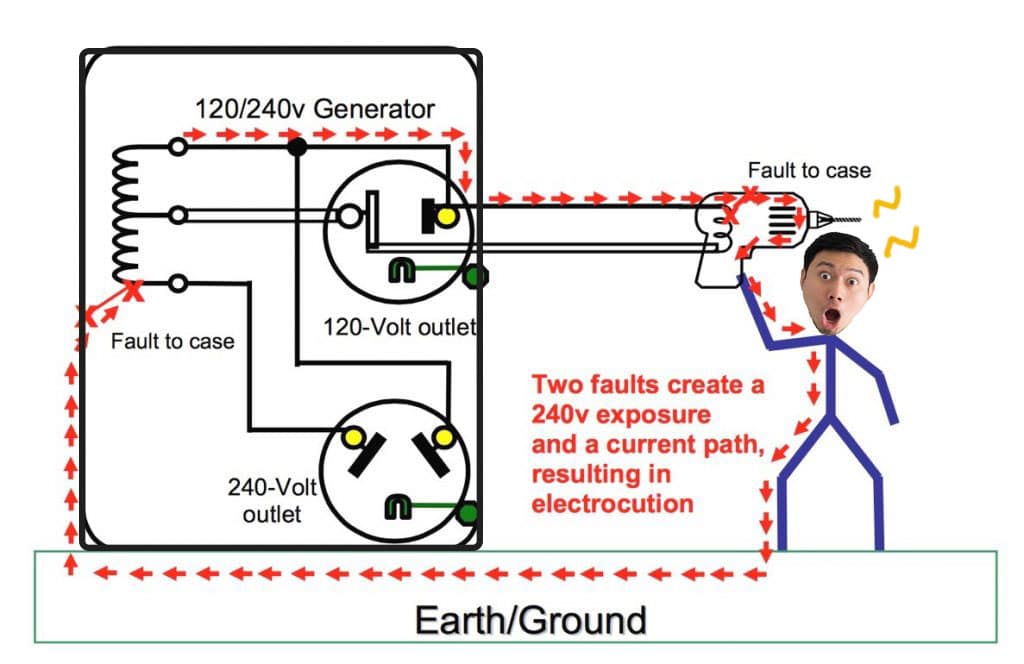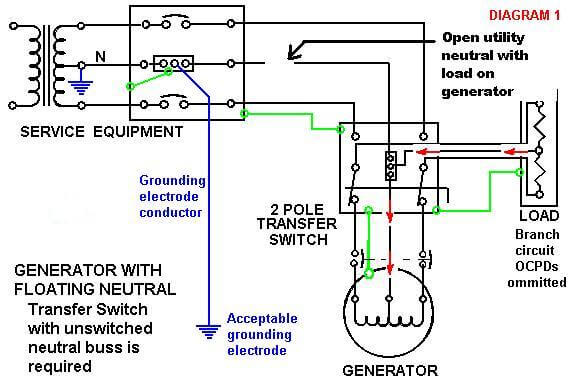Have you ever tripped your generator? If you’re considering purchasing a generator for your home or business, you might be wondering: bonded neutral vs. floating neutral? This is an important decision to make. Understanding the basics of electrical systems and what each option means will help you decide which one is right for your needs.
We’ve all been there. You plug in a generator, and it trips the breaker or worse yet – blows up! But what if we told you that this could be avoided with some simple step?
Bonded neutral generators connect neutral to ground, creating a single grounded system. Floating neutral generators isolate neutral from the ground, creating a separate grounded system. The type of generator depends on the devices and wiring system.
In most electrical systems, the neutral wire is wrapped with a grounding conductor to create a circuit. This is called “bonding.” In floating neutral generators, the ground has its own wire which can be used as an alternative to bonding.
There are pros and cons to each type of system. Let’s take a look at what they are so you can decide which one will work best for your situation!
Difference Between Live/Hot, Neutral, And Ground
An electric circuit has two wires. One wire carries electricity to the load and one wire returns the electricity back to the source. The current will not flow unless this loop is closed.
A wire that carries electricity from the source to the load is called a live wire. A wire that takes the current back to the source is called a neutral wire, or just neutral.
A ground wire is important. It will protect you if something goes wrong. A ground wire does not carry current when everything is working well.
What is a Floating Neutral on a Generator?

A floating neutral on a generator means that the neutral and ground wire can be used as an alternative to bonding. A floating neutral indicates that there is no emergency return path for the fault current since the neutral is not bonded with the generator’s frame.
This means when you plug in your generator; if it trips a breaker or blows up, this could be avoided by using floating neutral generators instead of bonded neutral generators because they provide more power protection.
In a floating neutral generator, the neutral is not bonded to the frame of the generator. Therefore, in order for it to meet NEC standards, neutral must be grounded once and not more than that.
The floating neutral design is used for applications such as connection to home power where the transfer switch does not switch out the neutral to ground connection, such as a connection to a recreational vehicle and a connection to residential power.
Floating neutrals are easier to install and remove than traditional systems, which make them great for temporary installations like construction sites; there’s no need for wiring changes at all (besides pulling another line).
Floating neutrals do not require any additional safety measures such as isolators or GFI circuits since grounding wires will work just fine without tripping breakers during a short circuit!
A floating neutral generator is needed for some homes, like ones with a grounded neutral. A transfer switch helps to change the flow of electricity.
What Is a Bonded Neutral Generator?

In a bonded neutral generator, the neutral is bonded with the generator frame to the ground, while the generator frame is bonded to the ground. As a result, a bonded neutral generator operates as a stand-alone or isolated unit.
A bonded neutral inverter is connected to the earth’s ground, making the neutral line and the ground line become one.
This creates a single point of reference for all voltages and grounds, which provides safety for personnel working on or near the equipment since there are no paths to earth: either through person-to-ground contact or from one piece of grounded metal touching another (such as when carrying something across an area).
The bonding ensures that no voltage potential exists at any place in between the unit’s case and earth termination points. In essence, this means you cannot be electrocuted by coming into contact with live parts inside or outside the enclosure because they would always have zero volts relative to the ground.
Bonding also helps prevent electric arcs from occurring during maintenance work, such as removing faulty components from within the generator.
As the NEC (National Electrical Code) Article 250 says, a transfer switch must be used in this situation. The NEC article 250 says that the neutral wire should be grounded at the first means of disconnect and not grounded more than once. This prevents induced voltages or currents from being given off.
How to Check for Bonded Neutral or Floating Neutral Generator?
There are two ways to check for neutral floating or bonded neutral.
The first way is by looking at the generator with a light bulb on it outside of the house and looking through windows, if any lights in your home turn off then that means generators have a floating neutral. If nothing turns off, you may be running into a problem with higher amps being pulled from appliances such as high-powered electronics or large electric heating systems, which can throw off the neutral current balance.
The other way is by checking for voltage differences inside the breaker box between neutral bar wire coming out of breakers and ground bars going back to panel boards (main electrical panel). Typically there should be about 120 volts difference, but some homes run at around 100 volts difference.
You can also check the type of neutral bonding on a generator by looking in the manual or visiting the manufacturer’s website. You can also call and ask them directly.
How to Avoid Tripping a Generator With a Bonded Neutral
If you have a generator for your electricity with GFCI outlets, you need to get a transfer switch so the circuits don’t trip.
Avoiding ever having current on your equipment grounding conductor is one of your aims when building or planning an installation.
When a feeder or branch circuit experiences a ground fault, the fault current is transferred from the grounded conductor back to the utilities via the main bonding jumper, the EGC, and the grounded conductor back to the service. The EGC is responsible for this.
The transfer switch or interlock kit will do the heavy lifting of routing power to properly ground 120-volt outlets and lights. They are available in three-phase transfer switches which transfer up to 480 volts or single-phase transfer switches that handle 200, 220, or 240 volts.
What Does GFCI Mean?
GFCI stands for ground-fault circuit interrupter. GFCI’s are helpful for protecting against electric shock and can be installed in new construction or existing homes with GFI transfer switch installation. GFCIs will not trip if it detects a problem between the neutral line and the ground.
So you may have to plug your GFPI into a normal receptacle at first until an electrician installs a GFI transfer switch or circuit breakers for both hotlines of 120 volts each that send two wires through the green slots on either side of the center slot which sends 216 volts one way and 208 volts another way up high wattage loads like a dryer, ovens, etc.
Conclusion
The electromechanics behind the bonding connection is in stark contrast to floating neutral generators. Hence, their respective applications may differ.
For example, a floating generator is needed for an AC motor that has no brushes or slip rings because the rotation of the armature generates its own electrical field and requires no external excitation source (e.g., starter).
On the other hand, if you’re using your generator as part of a DC machine, such as an induction motor with brushes and/or slip rings on it then you need to have at least one brush connected directly to the ground via a wire so that there will be voltage available across this brush during start-up when current flows from this point back into the stationary winding.
Never disconnect the bonded neutral generator. This is very dangerous, and it will not make the warranty work. If you need to use the generator somewhere else, ensure your house’s main panel has a GFI transfer switch.
Check the connection between the ground pin on the outlet and the generator’s frame. This will protect you from shocks when using the generator outside your house or at work.
